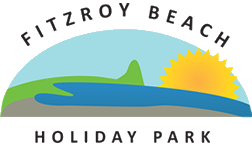FAQs about New Plymouth, New Zealand.
Planning a trip to New Plymouth? Here we answer some of the most commonly asked questions from our inquiries, reservations, and guests.
-
Where is New Plymouth?
- New Plymouth is located on the west coast of New Zealand’s North Island, in the Taranaki region. It sits about halfway between Auckland and Wellington, making it a perfect stop on a North Island road trip.
-
How do I get to New Plymouth?
- To get to New Plymouth from Auckland, Wellington, or Christchurch, the most convenient options are by plane or bus. Air New Zealand offers flights to New Plymouth from all three cities. For bus travel, InterCity provides services from Auckland, Wellington and all major North Island cities.
-
Where did New Plymouth get it’s name from?
- New Plymouth, New Zealand, gets its name from the English city of Plymouth, in Devon. The settlement was established by the Plymouth Company, a subsidiary of the New Zealand Company, and many of the first European settlers originated from Devon and Cornwall in England. The name was chosen in 1841 to reflect the origins of these settlers.
-
What is the original Māori name for New Plymouth?
- The Māori name for New Plymouth is Ngāmotu, which means "the islands". This name specifically refers to the area around Paritūtū and the Sugar Loaves, according to Te Rangi Aoao Nunui. The name Ngāmotu was also the name of the Māori hapū (sub-tribe) that lived in the area.
-
Where does the name Taranaki originate from?
- The name Taranaki originates from Māori language. It refers to both the mountain (formerly known as Mount Egmont) and the surrounding region. The name is derived from "tara" meaning mountain peak and "naki" possibly from "ngaki," which means "clear of vegetation". It is also linked to Rua Taranaki, an ancestor of the Taranaki iwi (tribe).
-
What is New Plymouth most well-known for?
- Notable features are the botanic garden (i.e. Pukekura Park), the critically acclaimed Len Lye Centre and Art Gallery, the 13 km (8.1 mi) New Plymouth Coastal Walkway alongside the Tasman Sea, the Len Lye-designed 45-metre-tall (148 ft) artwork known as the Wind Wand, Paritutu Rock, and views of Mount Taranaki.
- The region and town are also known for surfing, water leisure & sports, outdoor adventure activities, festivals and events, local cuisine and brewing.
-
What is special about Taranaki?
- Taranaki boasts a captivating mix of breathtaking natural scenery, a rich historical tapestry, dynamic arts and culture, sun-kissed beaches, premier events, memorable trails and hikes, and a celebrated dining scene.
-
Why choose to live or play in New Plymouth?
- Easily accessed by air using Air New Zealand’s domestic service and by road via major state highways, it’s the sunniest region in New Zealand (recording the most sunshine hours in 2022 and 2021), a year-round holiday destination and a sought-after place to live and work. The generous sunshine hours and rich rainfall make it a lush and fertile place for outdoor activities. All this, together with a strong, robust local economy, makes New Plymouth an attractive place to stage events.
-
What is the Māori legend about Mt Taranaki?
- Pukeonaki and Tongariro both loved Pihanga and fought over her. But Tongariro was stronger and Pukeonaki (Taranaki), bearing the scars of battle, withdrew underground, carving out the bed of the Whanganui River on his journey to the sea.
-
Why is Taranaki Maunga sacred?
- To the tangata whenua (Māori people) of Taranaki, Taranaki Maunga is an ancient and sacred ancestor whereby the people of Taranaki descended. Often described as 'New Zealand's most climbed mountain', Taranaki Maunga is an achievable summit challenge, taking on average, 9 hours for a healthy, fit adventurer.
-
Could Taranaki Maunga erupt?
- While dormant for the last 200 years, the probability of an eruption is a 30 – 50% chance in the next 50 years. Mount Taranaki or Taranaki Mounga is one of the most symmetrical volcanic cones in the world and, at 2,518 meters high, is the second-highest peak in the North Island. The Mounga is located within Te Papakura o Taranaki.
-
What‘s the best season to visit New Plymouth?
- Spring (September-November): Mild temperatures, blooming flowers in places like Pukekura Park, and the Coastal Walkway looking its best. You’ll be stunned by the unique scenery and native bush.
- Autumn (March-May): Sunny days, ideal for hiking and exploring, with the added bonus of autumn colours. Outdoor adventuring at its best!
- Summer (December-February): Warmest temperatures, perfect for swimming at the beach, surfing, water-sports, or enjoying anything outdoors. Plus, there’s the wonderful TSB Festival of Lights.
- Winter (June-August): Mild winter temperatures, allowing for activities like hiking, golf, biking, skiing, exploring the city and enjoying the local cafes.
-
Where should I stay?
- At New Plymouth's only holiday park on the beach, of course!
Fitzroy Beach Holiday Park offers a wide range of accommodation options to suit all budgets and requirements- from peaceful and sheltered sites, to studio and one- or two-bedroom cabins. Centrally located and on the Coastal Walkway, it is the perfect base for a quiet getaway, a family holiday, or whatever you have in mind.
